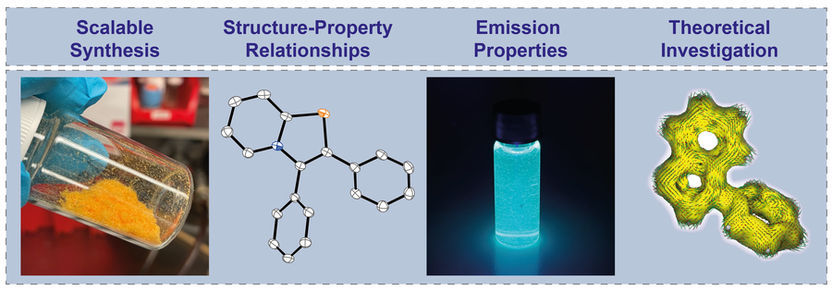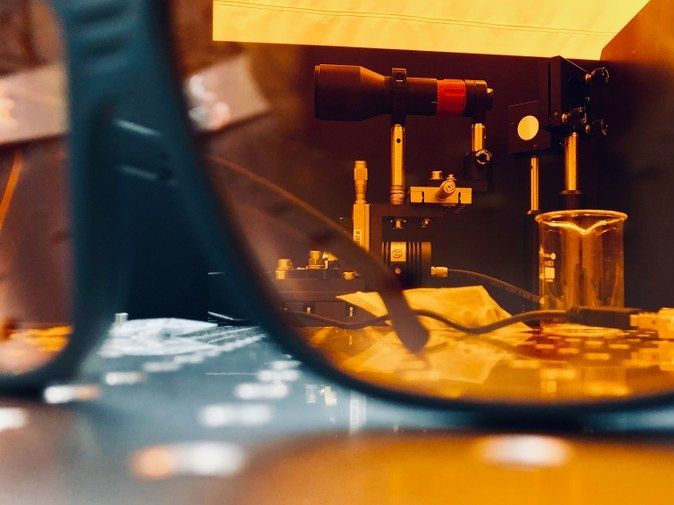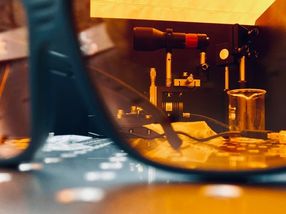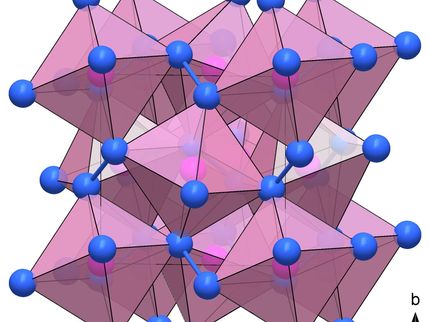Innovating Optoelectronic Components with Phosphorus
Significant breakthrough: phosphorus chemists develop new method to selectively introduce phosphorus and nitrogen atoms into polyaromatic systems
phosphorus chemist Prof. Jan J. Weigand from the Dresden University of Technology, in collaboration with an interdisciplinary team, has developed a groundbreaking method to introduce phosphorus and nitrogen atoms into polycyclic molecules. This method holds the potential to pave the way for the development of new materials with specific optoelectronic properties, ideal for applications in organic semiconductor technologies such as OLEDs and sensors. The results of this promising endeavour were published in the journal CHEM.

© Jannis Fidelius

© Sebastian Reineke


Polyaromatic hydrocarbons, abbreviated as PAHs, play a central role in numerous (opto-) electronic applications, including chemical sensors, organic light-emitting diodes (OLEDs), organic field-effect transistors (OFETs), and organic solar cells. Researchers are continually exploring the substitution of various elements beyond traditional carbon to optimize device performance and versatility. While substitution with boron (B), nitrogen (N), oxygen (O), and sulfur (S) has already undergone extensive research, the integration of phosphorus (P) in combination with nitrogen (N) remains a significant challenge.
Prof. Jan J. Weigand and his research group at TUD Dresden University of Technology have recently achieved a significant breakthrough: "In our current research, we have developed an innovative method to selectively introduce phosphorus and nitrogen atoms into polyaromatic systems. This method allowed the synthesis of a wide range of P/N-substituted compounds, whose physicochemical properties were thoroughly investigated in collaboration with physicists from TUD. Through the combination of material simulations and spectroscopic measurements, we were able to gain fundamental insights into the structure-property relationships of the obtained compounds."
The new method provides access to the well-known class of azaphospholes, which were previously only accessible in a very cumbersome manner and mostly in very low yields. Therefore, they were not considered for (opto-)electronic applications until now. "By deliberately combining phosphorus and nitrogen, we hope to be able to control the electronic and optical properties of these compounds in a way that was not possible before. This opens up exciting prospects for future applications in optoelectronics and beyond," adds Sebastian Reineke, head of the Light-Emitting and eXcitonic Organic Semiconductors Group (LEXOS) at TUD.
Original publication
Jannis Fidelius, Kai Schwedtmann, Sebastian Schellhammer, Jan Haberstroh, Stephen Schulz, Rongjuan Huang, Max C. Klotzsche, Antonio Bauzá, Antonio Frontera, Sebastian Reineke, Jan J. Weigand; "Convenient access to π-conjugated 1,3-azaphospholes from alkynes via [3 + 2]-cycloaddition and reductive aromatization"; Chem
Original publication
Jannis Fidelius, Kai Schwedtmann, Sebastian Schellhammer, Jan Haberstroh, Stephen Schulz, Rongjuan Huang, Max C. Klotzsche, Antonio Bauzá, Antonio Frontera, Sebastian Reineke, Jan J. Weigand; "Convenient access to π-conjugated 1,3-azaphospholes from alkynes via [3 + 2]-cycloaddition and reductive aromatization"; Chem
Topics
Organizations
Other news from the department science

Get the chemical industry in your inbox
By submitting this form you agree that LUMITOS AG will send you the newsletter(s) selected above by email. Your data will not be passed on to third parties. Your data will be stored and processed in accordance with our data protection regulations. LUMITOS may contact you by email for the purpose of advertising or market and opinion surveys. You can revoke your consent at any time without giving reasons to LUMITOS AG, Ernst-Augustin-Str. 2, 12489 Berlin, Germany or by e-mail at revoke@lumitos.com with effect for the future. In addition, each email contains a link to unsubscribe from the corresponding newsletter.




























































